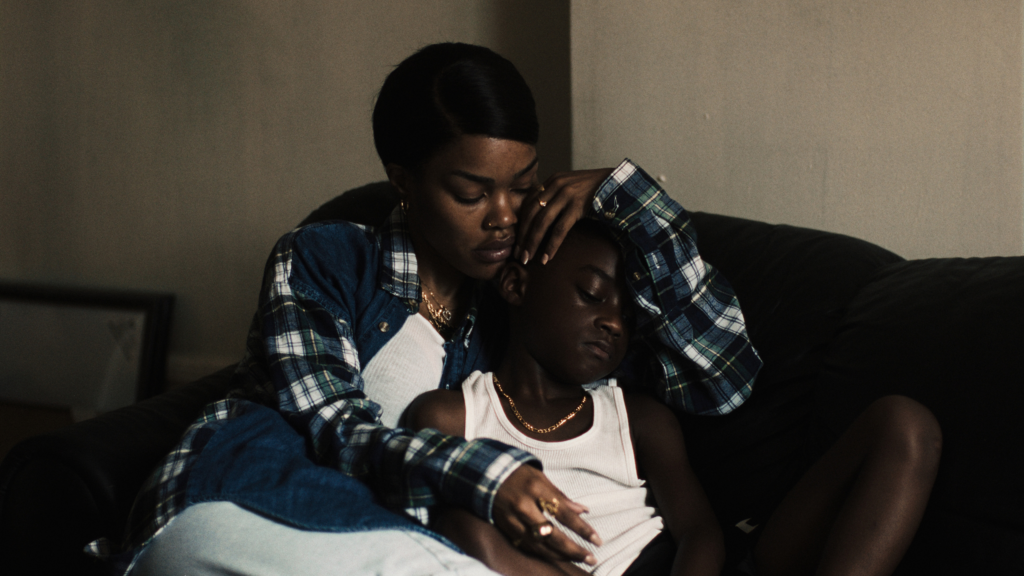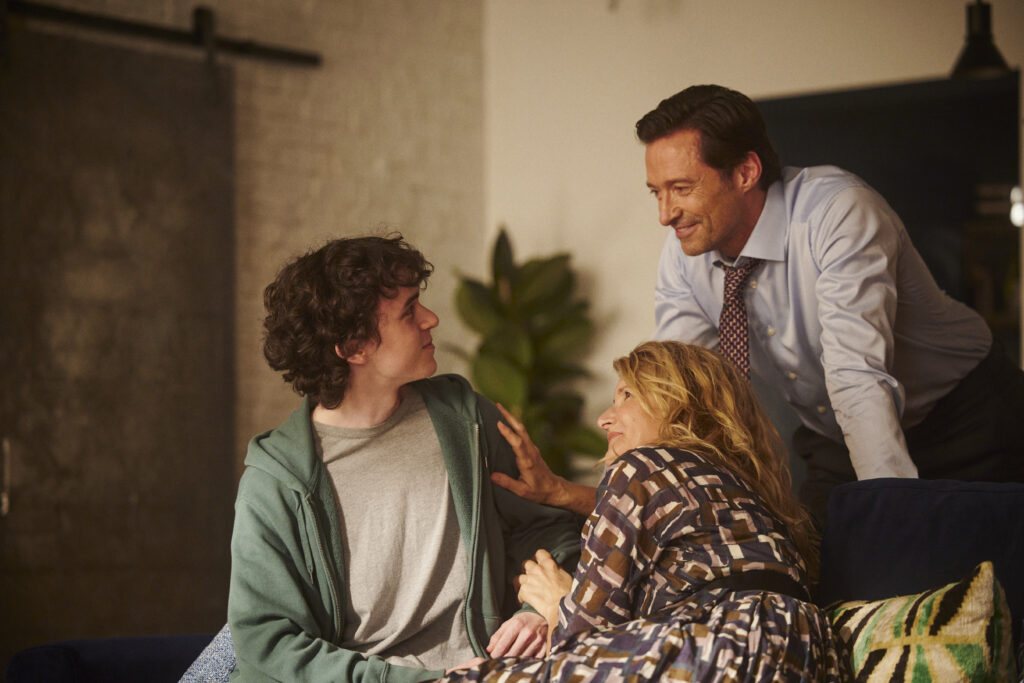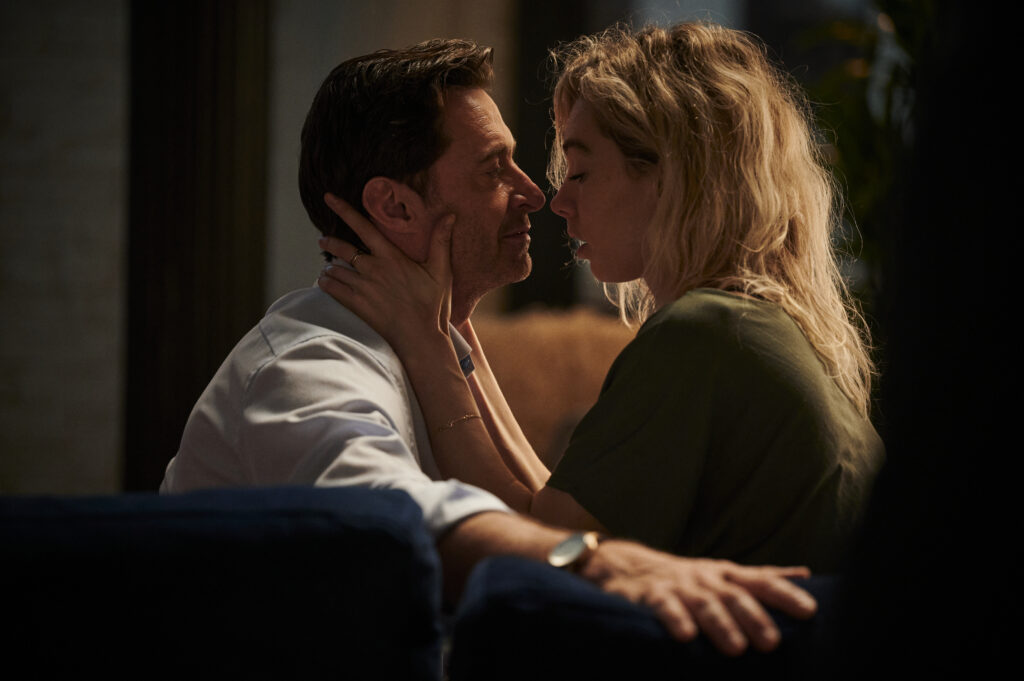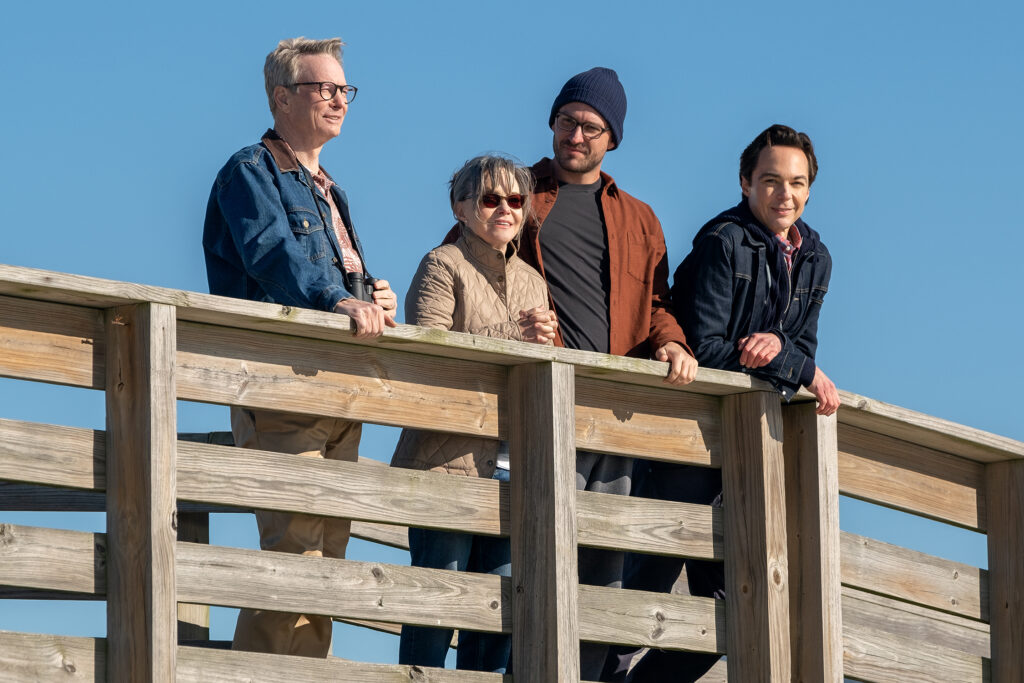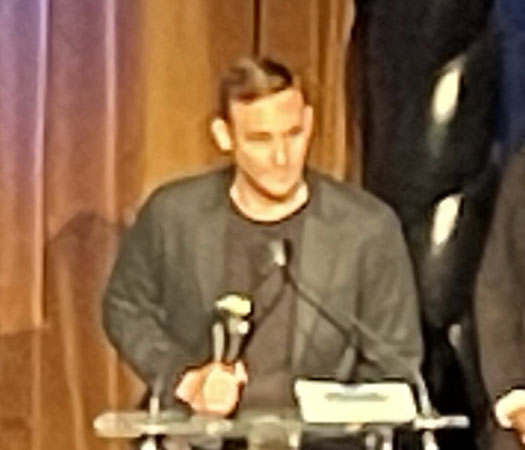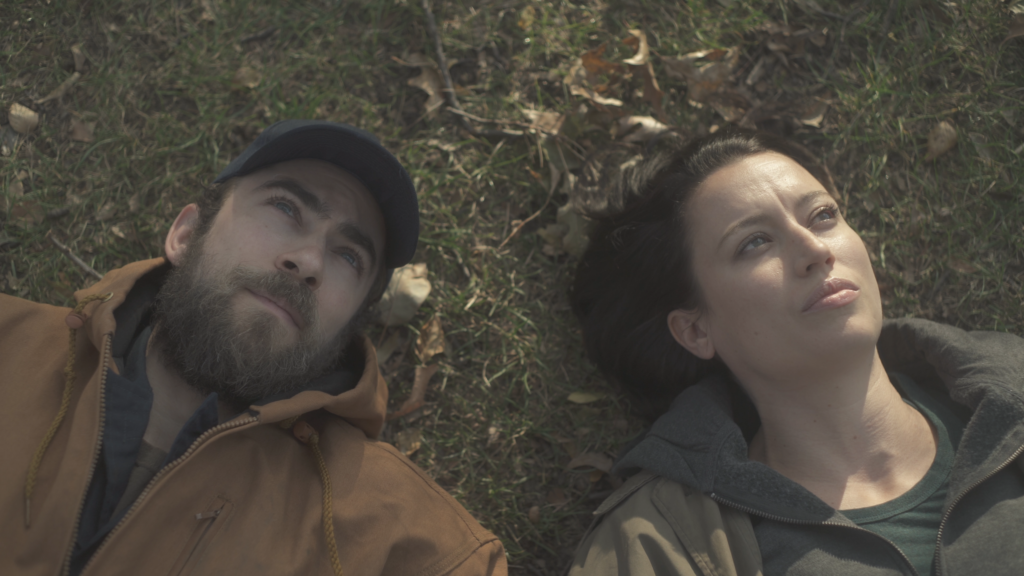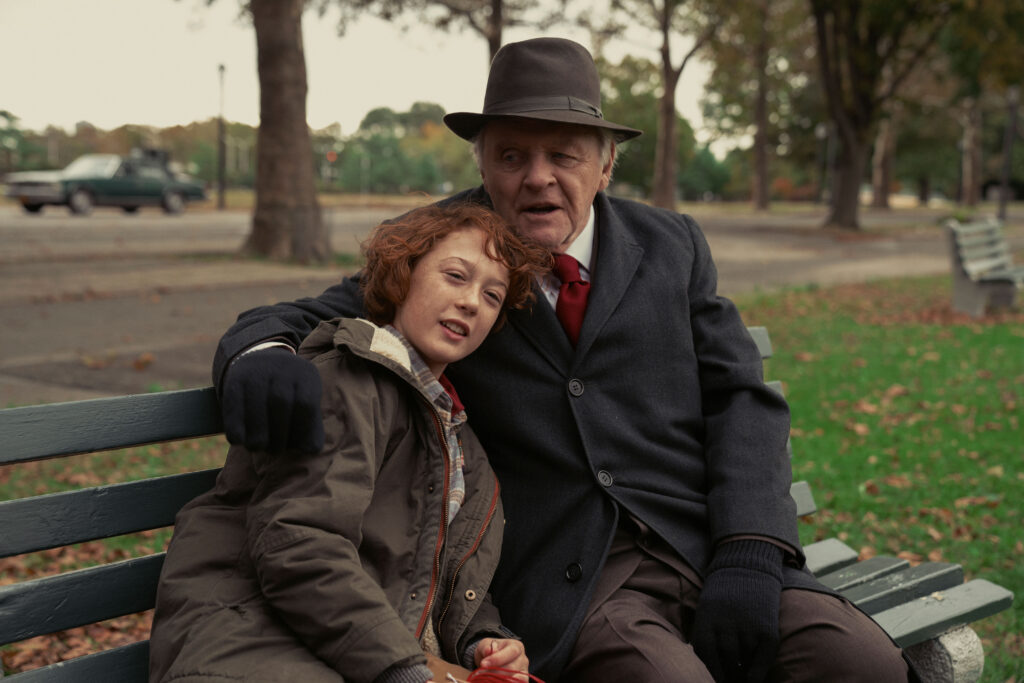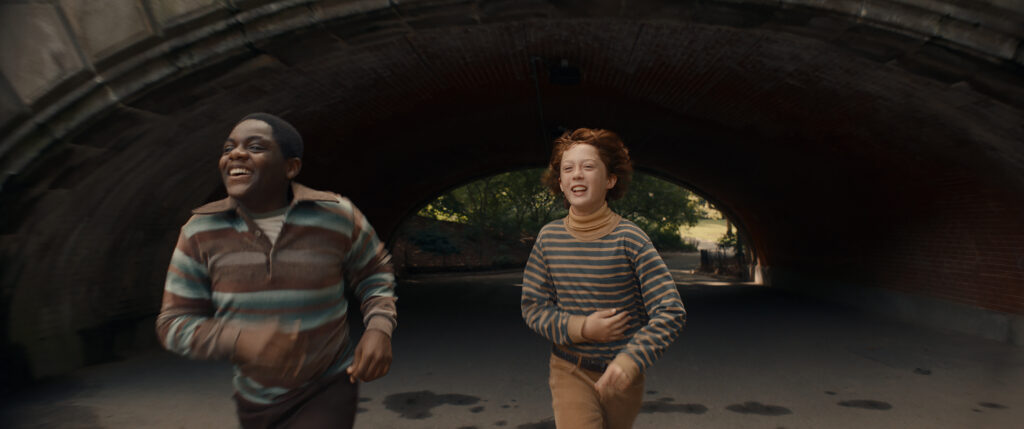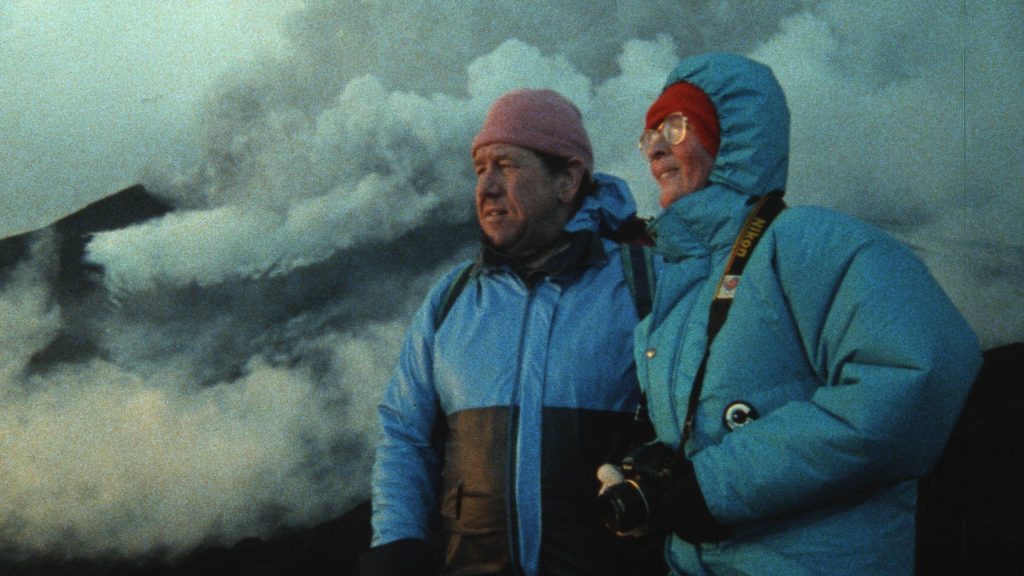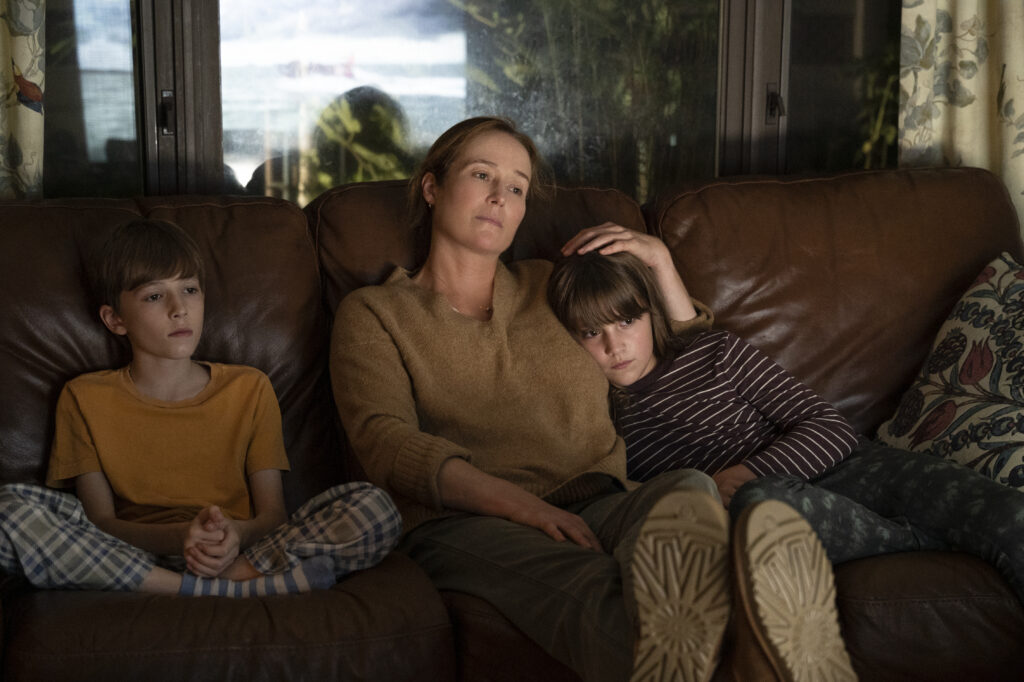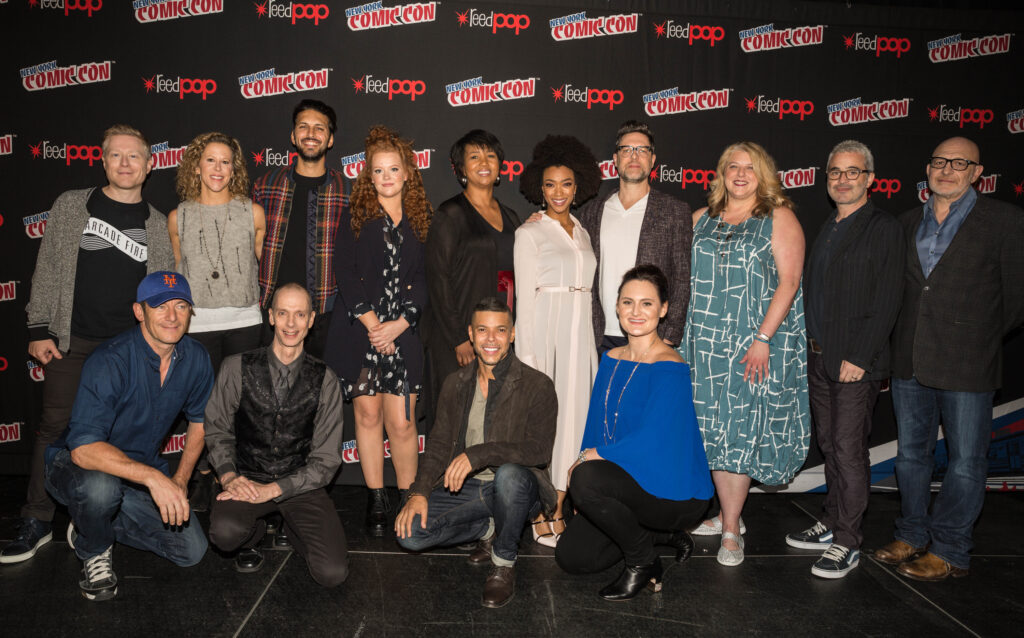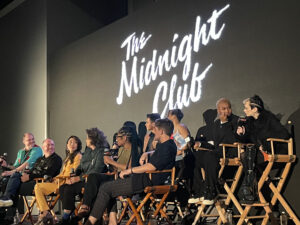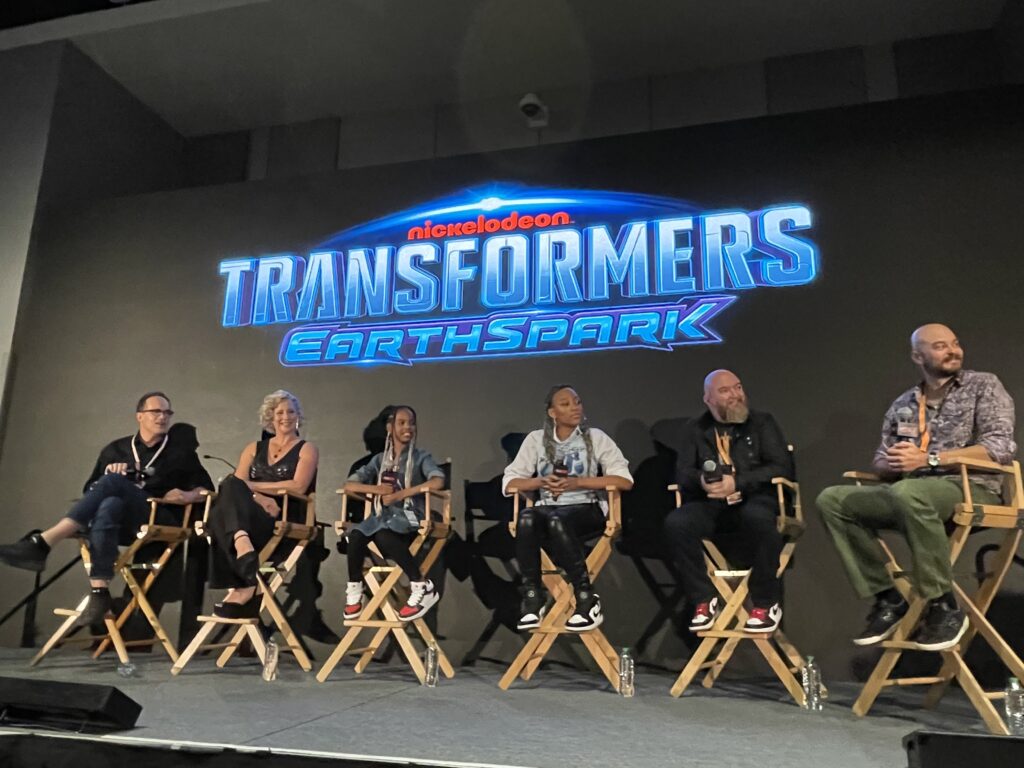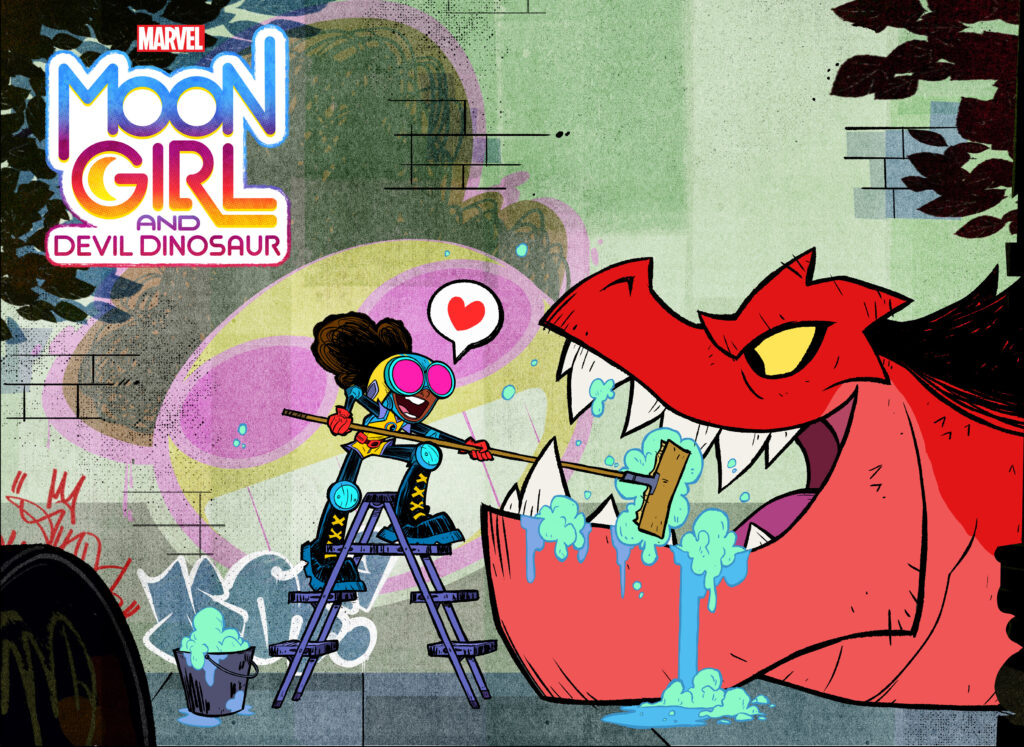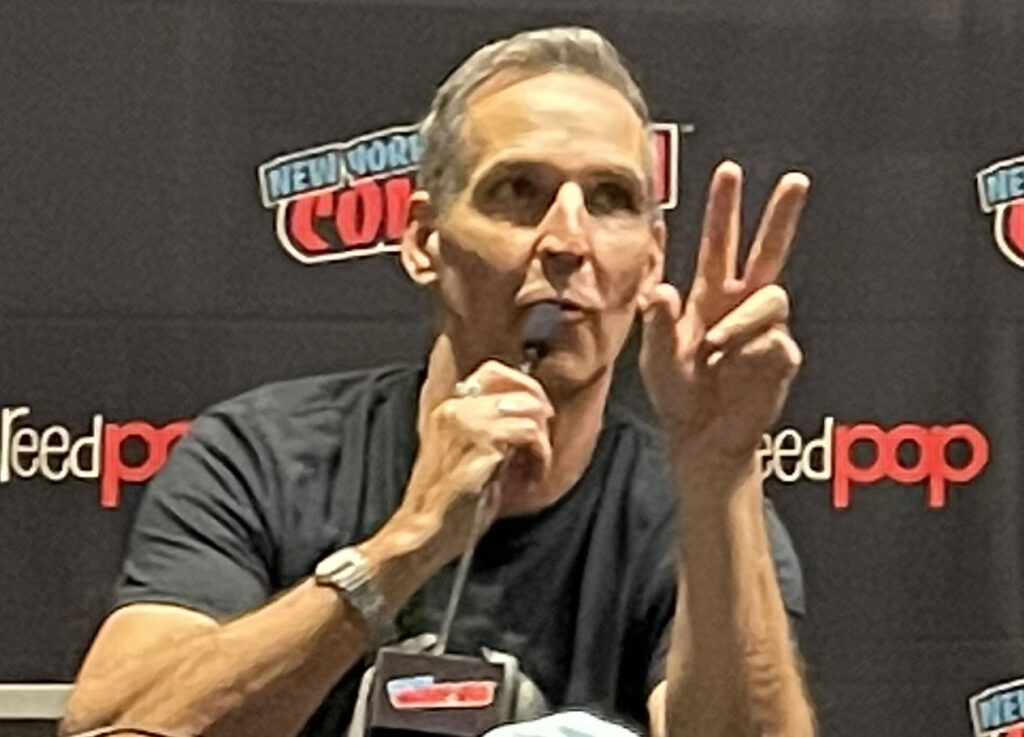February 5, 2023
by Carla Hay

Directed by Michael Jacobs
Culture Representation: Taking place in New York City, the comedy/drama film “Maybe I Do” features a predominantly white cast of characters (with a few African Americans and Latin people) representing the working-class and middle-class.
Culture Clash: A young woman pressures her boyfriend to propose marriage to her, while their married parents have extramarital encounters with each other.
Culture Audience: “Maybe I Do” will appeal primarily to people who are fans of the movie’s headlining stars and don’t mind watching all this talent wasted in a dull and unimaginative movie.

“Maybe I Do” should be titled “Maybe You Don’t Want to Watch This Slow-Moving Train Wreck That’s a Waste of Time and Talent.” Everything about the dreadfully boring romantic dramedy “Maybe I Do” looks forced, fake and awkward. The principal cast members just recite their awful dialogue (often stiffly) and never look convincing as couples. And there’s nothing romantic at all about this movie, unless you think it’s romantic to watch people in miserable marriages and a constantly whining woman threatening to break up with her boyfriend unless he proposes marriage to her. That’s essentially what viewers will see for about 80% of “Maybe I Do,” which has too much mindless repetition and not enough character development.
Written and directed by Michael Jacobs, “Maybe I Do” is based on a play that Jacobs wrote. The movie had the potential to be a witty look at an unlikely but not entirely impossible situation: Two unhappily married couples, who are strangers to each other, step outside their respective marriages by spending intimate time with the other couple’s spouses. Unbeknownst to these four spouses, one of the couple’s son is dating the other couple’s daughter. And when all six of them meet each other for the first time, it becomes a landmine of secrets, lies and pent-up resentment that could potentially destroy relationships.
This entire concept is already revealed in the trailer for “Maybe I Do,” which takes an excruciatingly long time to get to the very disappointing moment when the four spouses and their two children are in the same room together for the first time. Until then, “Maybe I Do” drags on and on with cringeworthy, unrealistic dialogue and painfully unfunny scenarios. Most of the principal cast members look like they have no emotional investment in their characters and only showed up for this movie for their salaries. Whatever they were paid for “Maybe I Do,” it wasn’t worth the embarrassment of being in this flop that most viewers will forget soon after seeing it.
“Maybe I Do” (which takes place in New York City, but the movie was actually filmed in New Jersey) begins by showing a sensitive sad sack named Sam (played by William H. Macy) , who is crying while watching a romantic movie in a nearly empty movie theater. Sam is by himself and has a quirk of putting candy, such as M&Ms and red licorice, on his popcorn to eat with the popcorn. (Don’t ask why, because the movie never bothers explaining this quirk.) Also in the movie theater is Grace (played by Diane Keaton), who sitting nearby and is also by herself. Sam and Grace are in their 70s.
Grace notices that Sam is crying, so she goes over to this stranger to comfort him. Grace strikes up a conversation with him in this theater (and apparently not caring that it’s very rude to talk in a movie theater when the movie is playing), and she finds out that they are both “distressed” and like to go to movies alone. It’s the first of many eye-rolling scenes in “Maybe I Do,” which is polluted with overly contrived scenarios that look very phony.
The next time Grace and Sam are seen together a few scenes later, it’s the same day that they’ve met. At this point, Sam and Grace have decided they’re going to spend some time together in a motel room, after changing their minds about it once. Sam says he just wants to “talk” in the motel room, and Grace nervously agrees.
They both know that they are unhappily married to other people. It’s an example of the movie’s sloppy writing and terrible editing to not show the conversation that Sam and Grace had about their marriages before they decided to get a motel room together. As far as viewers can see, one minute Sam and Grace have met. The next minute, Sam and Grace are getting a motel room together and feeling guilty about it. Viewers eventually find out if anything sexual happens between Sam and Grace in that motel room.
In the motel room, Grace and Sam sit on a bed together and turn on the TV. And what do you know: Porn just happens to be playing on the channel at that very moment. Grace, who is uptight and very sheltered, looks at the sex scene on TV, and she comments to Sam with amazement: “That’s how they do that?”
Grace and Sam eventually turn off the TV because what they’re watching is making them uncomfortable, as if they couldn’t possibly turn the channel and watch something else. It’s supposed to be a funny moment in the movie, but it just makes Grace look pathetic that she’s willfully ignorant about sex at this point in her married life. It should come as no surprise to viewers that Grace’s husband is cheating on her.
Grace’s husband is brash and arrogant Howard (played by Richard Gere), who is having a secret affair with materialistic and demanding Monica (played by Susan Sarandon), who is married to Sam. Howard and Monica are first seen in “Maybe I Do” while they are in a hotel bedroom, where Monica is trying to get sexually intimate with Howard, but he’s not interested. In fact, Howard wants to end this affair with Monica, but she still wants the affair to continue.
Here are some examples of the dull and trite lines of dialogue that Howard utters during this tryst with Monica: “Are we living our best lives? And also, what are we doing here?” The stars of “Maybe I Do” probably thought the same things while making this obvious dud of a movie.
Later, Howard says to Monica: “This is about leading the lives we have, to have the lives we deserve. It’s incredible to me you’ve been able to turn a one-night stand into something that it’s taken me four months to get out of.”
Monica gets upset when Howard tells her that he wants to end this four-month affair. She angrily tells him, “You walk out that door, and I’m going to figure out a way to get you back. I’m going to hurt you. I’m going to push that button, and you’re going to cease to exist.” Who talks that way? Only someone in a horribly written movie, or someone who thinks the world works like an episode of “The Twilight Zone.”
Meanwhile, the movie eventually reveals that Howard and Grace have a daughter named Michelle (played by Emma Roberts), while Sam and Monica have a son named Allen (played by Luke Bracey), who are having their own relationship problems. Michelle and Allen, who are in their early 30s, have been dating each other for a period of time that is never detailed in the movie.
However, they’ve been dating long enough for Michelle (who is very pouty and very bratty) to feel like her relationship with Allen needs to become a marriage. Allen (who is very laid-back and very bland) is in no rush to get married and likes the relationship exactly as it is now. Michelle issues an ultimatum to Allen: Tell her that he wants them to eventually get married, or she will break up with him.
This ultimatum comes after Michelle and Allen attend the wedding of Michelle’s best friend Sophia (played by Natalie Ortega), because this wedding triggers Michelle even more into wanting to get married. Michelle and Allen have a big argument during and after the wedding because of a stunt that Allen pulled at the ceremony. During the part of the ceremony where the bride throws her bouquet to the single women gathered to catch the bouquet (and whoever catches the bouquet is supposed to be the next one in the group to get married), Allen impulsively jumps above the women and catches the bouquet himself.
Why? Because he knew that Michelle was expecting to catch the bouquet, and he didn’t want her to use it as an excuse to pressure him to get married. Allen’s stupid plan backfires, because Michelle gets so angry at this stunt (which she calls the “most humiliating” experience of her life), she refuses to let Allen touch her until he decides if their relationship will lead to marriage.
And she gives him one day to decide. This is how she moronically gives this deadline: “This is my heart. This is my mind. All of it can be yours if you call within the next 24 hours. Operators are standing by.” Again: Who talks like that? And who would want to be married to someone who talks like that?
There’s a slightly misogynistic tone to “Maybe I Do,” which portrays all three women as mostly to blame for why the men feel miserable and trapped in these couple relationships. And they are some of the worst negative stereotypes for women: Michelle is a nagging shrew. Grace is a judgmental prude. Monica is a selfish manipulator.
Sam is portrayed as the most sympathetic person of the six main characters, because he is starved for love and affection but is constantly rejected by Monica. Sam laments to Grace that Monica “hates him,” and he’s grown to “hate” Monica too. The movie makes it look like Sam has been trying to make his marriage work with Monica, but she has been cruelly dismissive to Sam. Meanwhile, “Maybe I Do” makes it abundantly clear that Grace’s hangups about sex are what probably drove Howard to cheat on her.
“Maybe I Do” writer/director Jacobs could have done so many more interesting things with these characters, but he resorts to using lazy stereotypes of characters that these principal cast members have played versions of before in many other movies. Having two Oscar winners (Keaton and Sarandon) in the movie’s cast doesn’t mean much when they are further typecast in hollow roles. Jacobs, who created the TV comedy series “Boy Meets World” (which was on the air from 1993 to 2000), brings a stale sitcom tone to the movie, including have a corny musical score that’s sounds like it came from an outdated sitcom. In other words, don’t expect anything new, fresh and exciting in “Maybe I Do,” which clumsily lumbers along until its very predictable and uninspired end.
Vertical Entertainment released “Maybe I Do” in U.S. cinemas on January 27, 2023. The movie will be released on digital and VOD on February 14, 2023.

